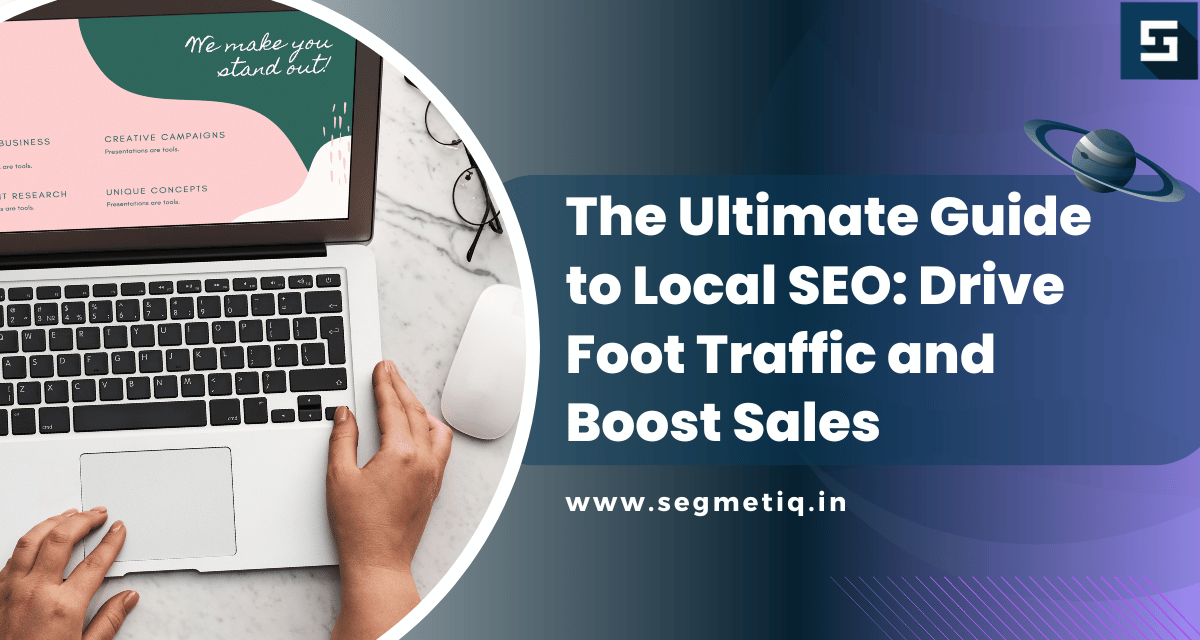In today’s digital age, having a strong online presence is essential for any business looking to thrive in the local market. With the rise of smartphones and search engines, consumers rely heavily on the internet to discover local businesses, products, and services. This is where Local SEO (Search Engine Optimization) comes into play – a powerful strategy that helps businesses optimize their online presence to attract more local customers, drive foot traffic to their stores, and ultimately boost sales.
Understanding Local SEO
Local SEO is the process of optimizing a business’s online presence to attract more local customers searching for products or services in their area. Unlike traditional SEO, which focuses on ranking for broad keywords, Local SEO targets specific geographic locations. This is crucial for businesses that rely on foot traffic, such as restaurants, retail stores, and service providers.
Key Components of Local SEO
1. Google My Business Optimization
Google My Business (GMB) is a free tool provided by Google that allows businesses to manage their online presence across Google Search and Maps. Optimizing your GMB listing is essential for local visibility. Ensure your listing is complete with accurate business information, such as address, phone number, website URL, and business hours. Encourage customers to leave reviews, as positive reviews can improve your visibility and credibility.
2. Local Keyword Research
Identifying and targeting the right keywords is crucial for Local SEO success. Conduct keyword research to discover what local terms and phrases your target audience is using to find businesses like yours. Focus on long-tail keywords that include your location and relevant industry terms. Incorporate these keywords naturally into your website content, including titles, meta descriptions, headings, and body text.
3. On-Page Optimization
Optimize your website’s on-page elements to improve its relevance and visibility in local search results. This includes optimizing title tags, meta descriptions, headings, and image alt text with local keywords. Ensure your website is mobile-friendly, as many local searches are conducted on mobile devices. Additionally, create location-specific landing pages for each of your business locations, if applicable.
4. Local Citations and Business Directories
Consistent and accurate business citations across online directories play a significant role in Local SEO. Ensure your business information (name, address, phone number) is consistent across all citations and directories, including Yelp, Yellow Pages, and industry-specific directories. This not only improves your visibility but also helps establish trust and authority with search engines.
5. Online Reviews and Reputation Management
Online reviews have a significant impact on consumers’ purchasing decisions and can greatly influence your local search rankings. Encourage satisfied customers to leave positive reviews on platforms like Google, Yelp, and Facebook. Respond promptly and professionally to all reviews, whether positive or negative, to demonstrate excellent customer service and improve your reputation.
6. Local Link Building
Building quality backlinks from local websites and directories can improve your website’s authority and relevance in local search results. Partner with local businesses, sponsor local events, or participate in community outreach initiatives to earn relevant backlinks. Additionally, ensure your website is listed on local business associations, chambers of commerce, and local news websites.
Measuring Local SEO Success
Tracking and analyzing key metrics is essential for evaluating the effectiveness of your Local SEO efforts. Monitor metrics such as local search rankings, website traffic, online visibility, customer reviews, and foot traffic to your physical location(s). Use tools like Google Analytics, Google Search Console, and third-party SEO software to gather insights and make data-driven decisions to optimize your strategy.
Conclusion
In conclusion, Local SEO is a powerful strategy for businesses looking to attract more local customers, drive foot traffic to their stores, and boost sales. By optimizing your online presence with Google My Business optimization, local keyword research, on-page optimization, local citations, online reviews, and local link building, you can improve your visibility in local search results and outshine your competitors. Remember to track and measure your results regularly to refine your strategy and stay ahead in the competitive local market.
By implementing these Local SEO strategies, businesses can strengthen their online presence, connect with local customers, and ultimately drive more foot traffic and sales to their physical locations. If you’re ready to take your local business to the next level, investing in Local SEO is the way to go.




